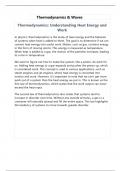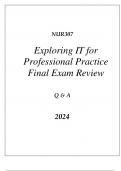Summary
Summary Introduction to physics(Thermodynamics,waves,Electricity,Magnetism,Quantum Mechanics,Relativiry) Review of Essential Trigonometry(sin,cos,tangent,trig indentities and functions) etc. Check Description
- Course
- Institution
Everything is in This document: 1-Thermodynamics & Waves 2-Introduction to Physics, Part 3 (Electricity, Magnetism, Quantum Mechanics & Relativity) 3-Review Of Essential Algebra, Part 1 4-Review Of Essential Algebra, Part 2 5-Review of Essential Trigonometry (Sin, Cos, Tangent - Trig Identitie...
[Show more]




